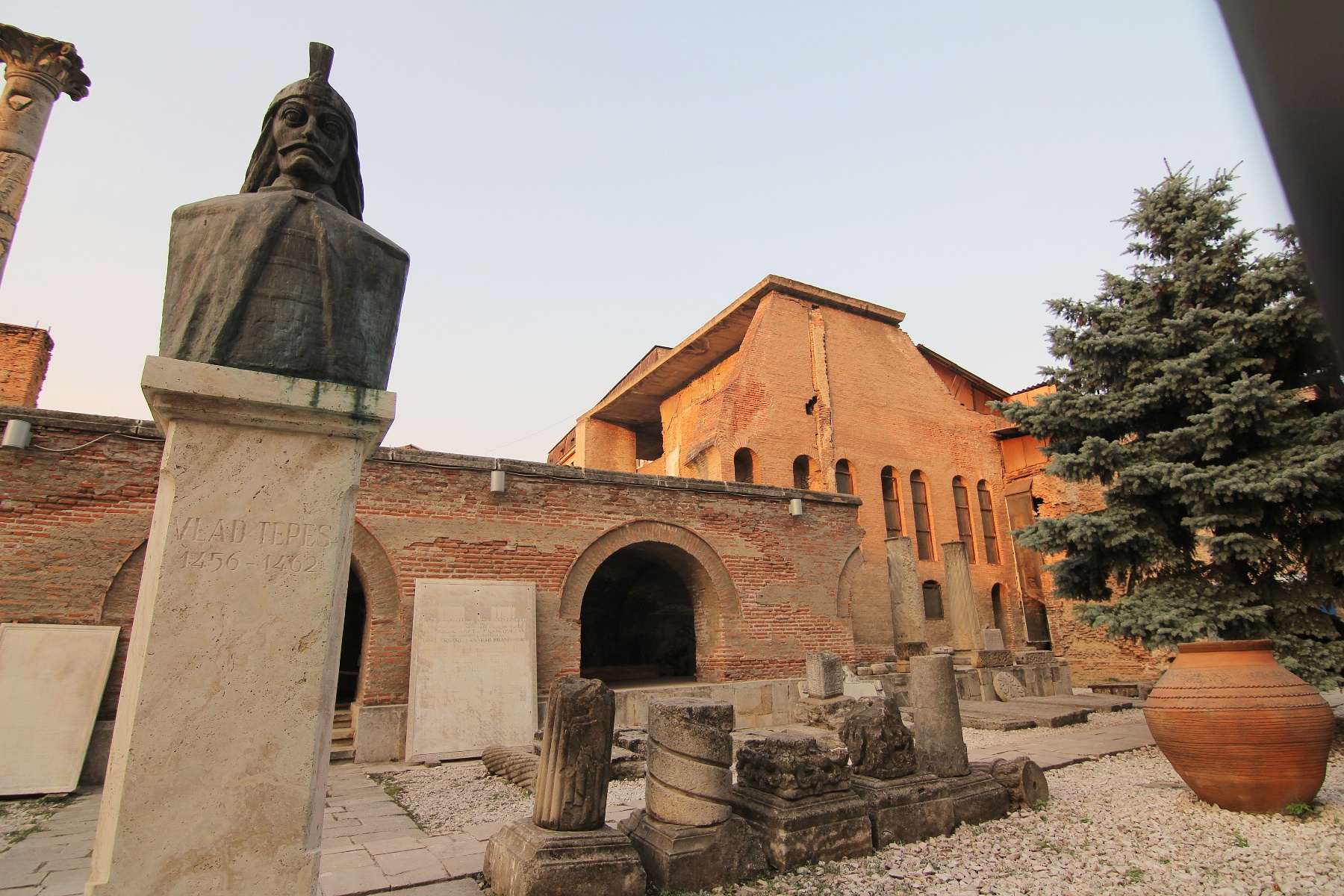Old Court (Bucharest) on:
[Wikipedia]
[Google]
[Amazon]
 Curtea Veche (the Old Princely Court) was built as a palace or residence during the rule of Vlad III Dracula in 1459. Archaeological excavations started in 1953, and now the site is operated by the ''Muzeul Municipiului București'' in the historic centre of Bucharest, Romania.
Curtea Veche (the Old Princely Court) was built as a palace or residence during the rule of Vlad III Dracula in 1459. Archaeological excavations started in 1953, and now the site is operated by the ''Muzeul Municipiului București'' in the historic centre of Bucharest, Romania.
File:Vlad Tepes document.jpg, Vlad Țepeș document establishing his court here on 20 September 1459Conserved at the
 This princely church was built by Mircea Ciobanul in 1559, and is the location of his grave. The church is "the oldest religious building maintained in its original aspect in Bucharest".
This princely church was built by Mircea Ciobanul in 1559, and is the location of his grave. The church is "the oldest religious building maintained in its original aspect in Bucharest".
File:Bucharest - Biserica Sf. Anton 03.jpg, Biserica Sfântul Anton altar
File:Bucharest - Biserica Sf. Anton 05.jpg, Biserica Sfântul Anton dome
File:Biserica Sfantul Anton marker.jpg, Biserica Sfântul Anton marker
 Curtea Veche (the Old Princely Court) was built as a palace or residence during the rule of Vlad III Dracula in 1459. Archaeological excavations started in 1953, and now the site is operated by the ''Muzeul Municipiului București'' in the historic centre of Bucharest, Romania.
Curtea Veche (the Old Princely Court) was built as a palace or residence during the rule of Vlad III Dracula in 1459. Archaeological excavations started in 1953, and now the site is operated by the ''Muzeul Municipiului București'' in the historic centre of Bucharest, Romania.
Voivode’s Palace
Vlad the Impaler's reign was dominated by conflicts with the Ottoman Empire, hence the necessity to permanently watch over and protect the southern border, the Danube, made him stay in the fortified town on the Dâmbovița banks. He issued a Latin document on 13 June 1458 from the area of current Bucharest. Then, on 20 September 1459, he issued a document in Slavonic, specifically referring to the "fortress" in Bucharest, his "princely residence". Other documents were issued in 1460 and 1461. Vlad would have been accompanied by his family, courtiers, and an army corps. During his reign,Mircea Ciobanul
Mircea the Shepherd ( ro, Mircea Ciobanul, d. 25 September 1559), was the Voivode (or Prince) of Wallachia three times: January 1545 (he entered Bucharest on 17 March)–16 November 1552; May 1553–28 February 1554 (leaving Bucharest t ...
repaired the palace, and defined the limits of the city. His palace became the economic nucleus of Bucharest, surrounded by the houses of traders and craftsmen known as the Lipscani. Matei Basarab repaired the palace during his own reign, so that it was "completely rebuilt...amazingly elegant" with a "charming aspect, much finer and gayer". Constantin Brâncoveanu rebuilt and extended the palace using stone, including a great marble staircase at the entrance.
Alexander Ypsilantis built a new princely court in 1775 at Dealul Spirii
Dealul Spirii (, ''Spirea's Hill'') is a hill in Bucharest, Romania, upon which the Palace of the Parliament (formerly known as ''House of the People'') is now located.
Spirii Hill
Initially a vineyard known as ''Dealul Lupeștilor'', the hil ...
. The old court was auctioned in 1798 by Constantine Hangerli.
National Museum of Romanian History
The National History Museum of Romania ( ro, Muzeul Național de Istorie a României) is a museum located on the Calea Victoriei in Bucharest, Romania, which contains Romanian historical artifacts from prehistoric times up to modern times.
The mus ...
File:Palatul Voievodal.jpg, Palatul Voievodal interior
File:Palatul Voievodal oven.jpg, Palatul Voievodal oven
Annunciation Church of Saint Anthony
 This princely church was built by Mircea Ciobanul in 1559, and is the location of his grave. The church is "the oldest religious building maintained in its original aspect in Bucharest".
This princely church was built by Mircea Ciobanul in 1559, and is the location of his grave. The church is "the oldest religious building maintained in its original aspect in Bucharest".
Popular culture
In its current role as a museum, the palace and neighbourhood inspiredMateiu Caragiale
Mateiu Ion Caragiale (; – January 17, 1936), also credited as Matei or Matheiu, or in the antiquated version Mateiŭ,Sorin Antohi"Romania and the Balkans. From Geocultural Bovarism to Ethnic Ontology" in ''Tr@nsit online'', Institut für die ...
to write his novel ''Craii de Curtea-Veche
''Craii de Curtea Veche, Curtea-Veche'' (known in English as ''Rakes of the Old Court'' or ''Gallants of the Old Court'') is a novel by the inter-war Romanian author Mateiu Caragiale. Published in 1929 in literature, 1929, it took the author more ...
''. It is also at the center of efforts to restore the historic center of Bucharest.
See also
* Bucharest Old TownReferences
External links
* {{Quarters Bucharest History of Bucharest Museums in Bucharest Official residences in Romania Historic monuments in Bucharest Historic house museums in Romania Lipscani